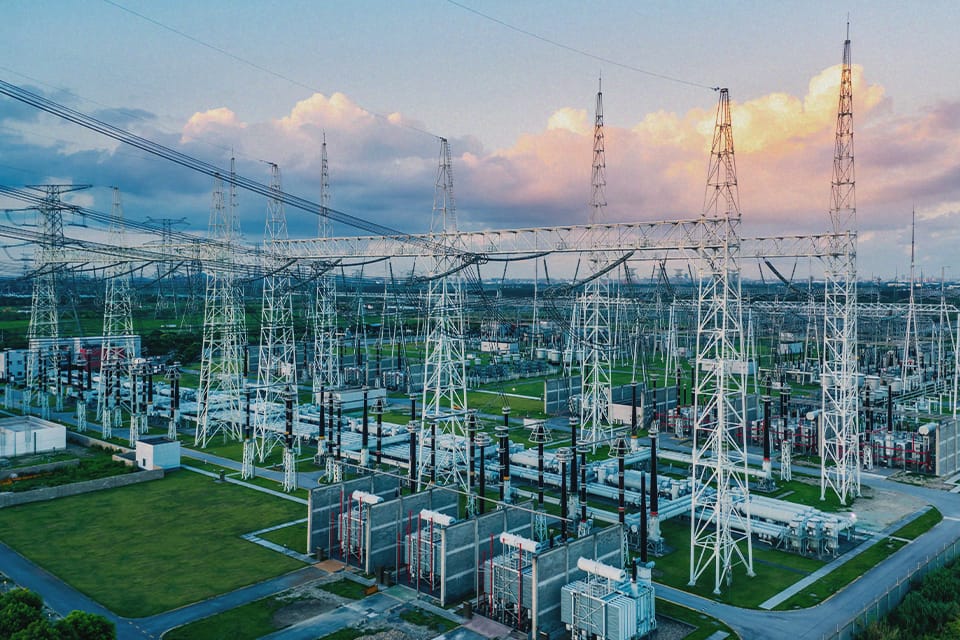
More Than Orientation: Building Effective Safety Onboarding Programs | Risk Matrix Episode 114
THE RISK MATRIX Cutting-edge podcast on occupational safety and risk management. Hosted by industry titans: JAMES JUNKIN, MS, CSP, MSP,…

Electricity is still vital in everyday life for billions of people worldwide. It turns house lights on in the morning, starts the coffee machine, and ensures mobile phones have full batteries before commuters rush out the door and head to work. With those necessities, however, come extreme wear and tear on utility facilities, and a planned power outage, also known as a controlled outage, is crucial maintenance procedures for ensuring the long-term reliability and safety of the power grid.
Unfortunately, even well-planned outages can disrupt essential services and inconvenience residents and businesses. As such, following specific safety protocols becomes paramount to minimizing disruption and, most importantly, ensuring the safety of everyone involved.
This article discusses why these planned outages are necessary in more detail, the seven steps for safely scheduling them, and the growing role of technology in their success.
Controlled outages are strategic interruptions of electricity supply to specific areas or facilities and are typically implemented for the following reasons:
Routine maintenance and electrical equipment repair are essential to prevent larger, unplanned outages. Controlled outages allow crews to access and work on critical infrastructure safely, such as:
The power grid needs periodic upgrades and expansion to meet growing energy demands and incorporate new technologies. Controlled outages provide a safe window for crews to install new equipment or reconfigure existing systems.
Sometimes, controlled outages are necessary to address safety hazards, including the following:
Planning a controlled outage is a multi-faceted process that requires collaboration between various stakeholders. Here’s a breakdown of seven critical steps:
Safety leaders should clearly define the geographical area or facilities affected by the outage and estimate the anticipated duration of the outage based on the planned work.
Next, contingency plans should be developed if the outage extends beyond the estimated timeframe.
Management should obtain any necessary permits and approvals from regulatory bodies to conduct the planned work. This process should include coordinating with local authorities to ensure they know about the outage and can assist with traffic management and public safety measures.
The company should publicly announce the planned power outage well in advance through various channels, including but not limited to:
The notification should clearly communicate the area impacted, the duration of the outage, and contact information for inquiries.
Safety leaders should also identify critical infrastructure within the impacted area and notify them of the planned outage. This might include:
Additionally, the company should inform all internal personnel involved in the outage, such as:
Before the outage, safety teams should also conduct thorough inspections of the equipment and surrounding environment to identify any potential safety hazards.
This process should include ensuring all personnel involved in the outage are trained and equipped to perform the work safely, including following all safety protocols and using proper personal protective equipment (PPE).
Management should also develop and implement emergency response plans in case of unforeseen incidents during the outage, including:
Management must also confirm that the necessary personnel and equipment are readily available and strategically positioned for the outage. This strategy might include setting up reliable communication channels between crews in the field, command centers, and customer service representatives.
Critical facilities within the impacted area must be identified and coordinated using backup power solutions, such as generators, to minimize disruption.
Maintaining clear and consistent communication with all stakeholders throughout the outage is essential, including updates on progress and estimated time for restoration.
Teams should also continuously monitor the power grid and equipment during the outage to identify any potential issues and ensure safe power restoration.
Once power is restored, safety teams should conduct a thorough safety inspection of the equipment and surrounding area to ensure everything functions properly and any potential hazards are addressed.
This process should include the following steps:
Lastly, team leaders use these observations to prepare a detailed report on the outage.
Technology becomes more crucial every day in planning, executing, and monitoring controlled outages safely and efficiently.
The key technological advancements that contribute to a successful outage are growing in number, but a few of the most critical ones are as follows:
Modern grid management systems allow for real-time monitoring and control of the power grid. This enables operators to isolate affected areas during outages, minimize the impact on surrounding areas, and optimize restoration efforts.
Automated communication systems can streamline public notification and ensure timely updates are disseminated throughout the outage event. This helps to keep customers informed and reduce anxiety.
GIS technology helps identify and map the affected areas, allowing for targeted communication and resource deployment during the outage.
These solutions provide real-time tracking and communication with crews in the field, ensuring efficient execution of outage procedures and improved safety through remote monitoring.
While planned power outages can be inconvenient, they are vital to maintaining a reliable and safe power grid. By following a comprehensive planning process–like the one described above–and utilizing the latest technology, utilities can minimize disruption and prioritize the safety of everyone involved.
However, any power outage, whether planned or incidental, puts onsite workers at increased risk for injury. To safeguard them from harm the best you can, you need a comprehensive safety solution that complements your controlled power outage strategy and meets the needs of your specific worksite.
Consider working with us to tailor a solution that keeps workers safe during all power outages.
Contact us today to learn more.


THE RISK MATRIX Cutting-edge podcast on occupational safety and risk management. Hosted by industry titans: JAMES JUNKIN, MS, CSP, MSP,…
We’ll send you practical and insightful supply chain risk management info that can benefit your business. Plus, important company updates that keep you in the loop.
